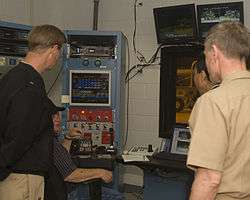Engineering technician

An engineering technician is primarily trained in the skills and techniques related to a specific branch of engineering, with a practical understanding and has general fundamental engineering concepts.[1] Engineering technicians often assist engineers and technologists in projects and research and development. An engineering technician sits between a skilled craft worker and a Technologist.
The Dublin Accord was signed in 2002 as an international agreement for the recognition of engineering technician qualifications. The Dublin Accord is analogous to the Washington Accord for engineers and the Sydney Accord for engineering technologists.
Nature of work
Engineering technicians solve technical problems. They build or set up equipment, conduct experiments, and collect data and calculate results. They might also help to make a model of new equipment. Some technicians work in quality control, where they check products, do tests, and collect data. In manufacturing, they help to design and develop products. They also find ways to produce things efficiently.There are multiple fields in this job such as; software design, repair, etc.[2] They may also be people who produce technical drawings or engineering drawings.
Education
Engineering technician diplomas and 2-year degrees are generally offered by universities and non-university higher education institutions like colleges of further education, industrial schools, and community colleges. University institutions having 4-year programs offer technical engineering training and undergraduate courses in science and engineering that are useful for obtaining entry-level jobs as an electrical or electronics engineer.[3] Many 3 and 4-year colleges and universities offer bachelor's degrees in engineering technology, but graduates of these programs often are hired to work as applied engineers after further studies, not technicians.[4] In some countries, there were vocational education schools that may have also conferred the title without awarding any degrees.
Both Portugal and Spain use the title of engenharia técnica/ingeniería técnica, literally "technical engineering", for the professionals who were awarded a short-cycle 2- to 4-year undergraduate degree (associate degree or bachelor's degree) in a technical engineering field by colleges or technical engineering institutes in the case of Portugal, and universities in Spain. Spanish "technical engineers" have full competency in their respective professional field of engineering, being the difference that the three year Engineers have competence only in their speciality (Mechanical, Electrical, Chemical, etc.)and the "Engineering Superior School" Engineers have wider competences.
In the United States, the Technology Accreditation Commission of the Accreditation Board for Engineering and Technology (ABET) grants 2-year associate degree programs to students that meet a set of specified standards. These programs include at least a college algebra and trigonometry course and, if needed, one or two basic science courses at any accredited school. The number of math and science prerequisite courses depends on the branch of engineering that the student chooses.
Engineering technicians apply scientific and engineering skills usually gained in postsecondary programs below the bachelor's degree level or through short-cycle bachelor's degrees. However, some university institutions award undergraduate degrees in the field of engineering which may confer the title of Engineering technician to the student, who is, however, eligible to become a fully chartered engineer after further studies at the master's degree level. Engineering technicians are called professional engineers in the UK only.
Certification
In Canada, the term certified engineering technician is protected by legislation and can only be used by technicians certified by provincial member organizations of the Canadian Council of Technicians and Technologists, such as the Ontario Association of Certified Engineering Technicians and Technologists and the Association of Science and Engineering Technology Professionals of Alberta.
In the United Kingdom, the term Engineering Technician and post-nominals EngTech are protected in civil law, and can only be used by technicians registered with the Engineering Council UK.
The term engineer is not protected in the UK, however those holding EngTech accreditation can be employed as Engineers, providing they have the additional experience/qualifications. In the UK the term "Engineer" is used by thousands of unskilled, semi-skilled and skilled trades.
In the eyes of professional engineers (but not the public) It is more acceptable to reserve the title 'Engineer' until you can fulfil the criteria required by the Engineering Council UK for Incorporated Engineer (IEng) or Chartered Engineer (CEng) status - A Bachelors / Masters Engineer Degree and additional professional practice experience (minimum 4 years), as well as a nominated sponsor who can verify your claims is the most common method for IEng/CEng accreditation.
This procedure helps reduce the saturation of the term 'Engineer', a concern to many who have completed years of undergraduate and postgraduate study and often work as 'Junior Support Engineers' for a number of years after graduation before being able to confidently state their profession.
See also
References
- ↑ US Department of Labor job Description
- ↑ Engineering Technician
- ↑ "Electrical and Electronic Engineer". Occupational Outlook Handbook, 2012-13 Edition. Bureau of Labor Statistics, U.S. Department of Labor. Retrieved November 15, 2014.
- ↑ "Electrical and Electronic Engineering Technicians". Occupational Outlook Handbook, 2012-13 Edition. Bureau of Labor Statistics, U.S. Department of Labor. Retrieved November 15, 2014.
External links
| Look up technician in Wiktionary, the free dictionary. |
- List of tasks and requirements for mechanical engineering technicians
- Institution of Mechanical Engineers (IMechE) UK
- The Engineering Technician Forum on LinkedIn